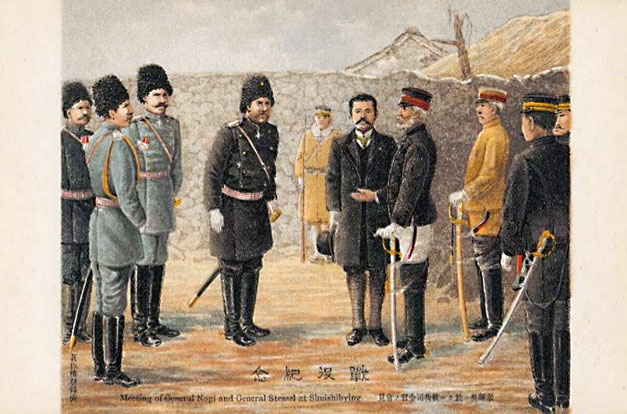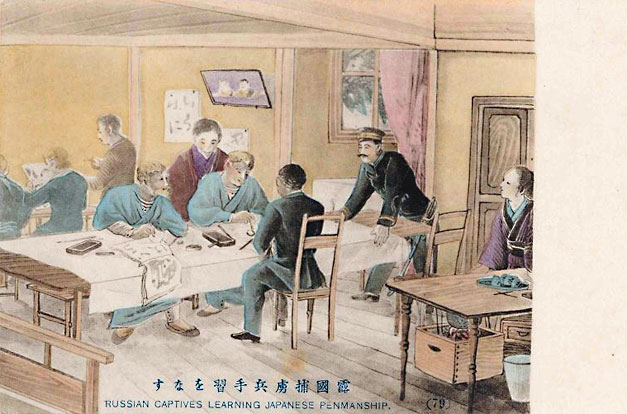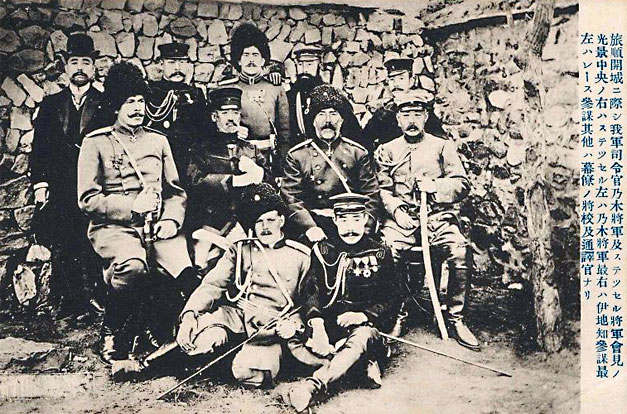Respecting the Russian Foe
By the end of World War Two in Asia in 1945, the Japanese military had become associated with atrocities and war crimes that have left an enduring stain on the nation’s reputation. Some of this behavior was already foreshadowed in the Sino-Japanese War of 1894–95 (see the Visualizing Cultures unit
“Throwing Off Asia II”). In their widely scrutinized war with Russia a decade later, the Japanese took care to present themselves to the world as benevolent and honorable warriors—practitioners of “civilized” behavior who understood and practiced the most humane values, even in the heat of battle. Picture postcards such as these were not bogus, but at the same time they must be understood in the light of this carefully calculated propaganda campaign.
“Garden Party to Celebrate Russian Festival in the Shizuoka
Quarter for Russian Prisoners, Japan”
[2002.3287]
“Russian Captives Learning Japanese Penmanship”
(from an unidentified series)
[2002.3440]
“Meeting of Stoessel and General Nogi upon the
Surrender of Port Arthur”
[2002.3275]

“Official Commemoration Card: Meeting of General Nogi
and General Stessel at Shuishiying”
[2002.4201]




